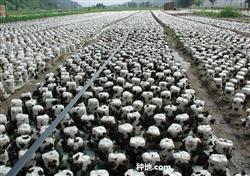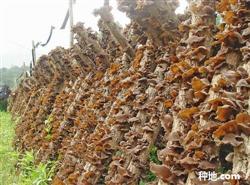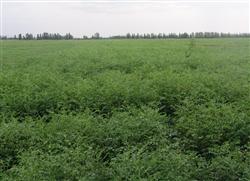How to cultivate black fungus?

How to cultivate black fungus? Please introduce 1. Cultivation season and material preparation 1. Cultivation time: the choice of cultivation time is the key to the success or failure of cultivating Auricularia auricula, which is closely related to the high yield and poor quality. Bag-making should be selected from early October to November, and the alpine area can be appropriately early. This time is ideal, when the room temperature is 28 ℃, the air humidity is about 65%, and the temperature is getting lower, and the activity of miscellaneous bacteria is at a low ebb. It is beneficial to the mycelial colonization and absorption of nutrients of Auricularia auricula, and is also beneficial to the emergence of auricularia auricula in early spring. 2. Raw material ratio: Auricularia auricula is a wood-rot fungus, using sawdust as culture material, its nutritional composition can meet the needs of the growth and development of Auricularia auricula. The tree species suitable for cultivating Lentinus edodes and Auricularia auricula are suitable for the cultivation of bag material Auricularia auricula. Pine, fir, cypress and so on contain oil, alcohol, ether and other substances, Lauraceae and diazepam spice tree species also contain aromatic substances, these tree species sawdust must be treated before the cultivation of Auricularia auricula, otherwise should not be selected. It is better for sawdust to be crushed into grains with 8mm sieve holes at once, and cottonseed hull and rice husk powder are also ideal cultivation materials. The medium is composed of auxiliary materials such as wheat bran and rice bran. Raw materials are required to be fresh and mildew-free. The formula is as follows: (1) 80% of sawdust, 18% of wheat bran, 1% of gypsum powder, 1% of sucrose and the right amount of water. (2) 68% of sawdust, 15% of rice husk powder, 16% of wheat bran, 0.5% of lime, 0.5% of sugar and the right amount of water. (3) 65% of sawdust, 24% of cottonseed hull, 15.5% of wheat bran, 0.5% of lime and the right amount of water. Second, the technological process of bag planting black fungus when mixing material, the water content of bag planting Lentinus edodes is slightly drier than that of bag planting Lentinus edodes, and 50% 55% is suitable. Because the mycelium of Auricularia auricula is fine, the fungus develops slowly, the culture material is slightly dry, the gap is large, and the oxygen content is sufficient, it can obviously accelerate the mycelium of Auricularia auricula, which is beneficial to the later stage (field management). The bagging and sterilization are similar to the bag material Lentinus edodes (15 × 15 tubes). The inoculation box is operated under aseptic conditions, each bag is connected with four holes, the amount of inoculation is increased appropriately, and the whole strain is connected, so that the mycelium of Auricularia auricula can quickly restore growth and occupy the inoculation mouth. After inoculation, the mouth was tied up with a bag and transferred to the culture room for culture. The culture room should be cleaned in advance, fumigated with sulfur or sprayed with 5% phenol or peracetic acid on the walls, space and floor. After the smell of the agent is distributed, the inoculated bacterial bag is piled into a parallel pile or "well" shape. Suitable temperature culture: temperature has a great influence on the mycelium growth of Auricularia auricula. In order to make the mycelium of Auricularia auricula grow normally, room temperature must be mastered according to different growth periods. The growth stage of mycelium can be divided into: germination period, that is, within 15 days after inoculation, the appropriate indoor temperature for the first 10 days is 26 ℃ 28 ℃, so that the mycelium can absorb nutrients faster, colonize and spread, occupy culture materials, become dominant and reduce miscellaneous bacteria pollution, but it should not exceed 30 ℃. After 10 days, with the growth and development of mycelium, the temperature in the bag will gradually rise. Generally, the bag temperature will be 2 ℃ higher than room temperature. Therefore, it is necessary to adjust the room temperature to 22 ℃ 24 min. Robust period: after 20 days, the hyphae reached the strongest stage of decomposing and absorbing nutrients, the hyphae were exuberant and majestic, the metabolism was accelerated, the bag temperature continued to rise, and the room temperature was about 22 ℃. At this time, special attention should be paid to turning the heap to prevent abnormal temperature and increase the number of ventilation. Mature period: that is, after 40 days, the mycelium enters the physiological mature stage, which is about to transition from vegetative growth to reproductive growth, and the bag temperature gradually decreases to maintain about 20 ℃. It is necessary to observe the temperature change and master the switching time of doors and windows. When closing the door to increase temperature, we must pay attention to the temperature and timely ventilation. It can still heat up after closing the door, so we should pay attention to the bacteria canister scattered in time to avoid "burning bacteria". When the mycelium is full of bags, it can be moved to the cultivation ground for ear management. Third, select fields or lawns with good ventilation, sufficient sunshine, convenient water sources, no pollution sources and waterlogging prevention. The bed is shaped like the back of a tortoise, wide 120cm, unlimited in length, and the edge ditch is a sidewalk. It is made of small wooden poles or wire, which is a little thinner than Lentinus edodes. The border bed is covered with hay to moisturize (or cover with holes with plastic film) to prevent the earphone from eroding by sediment, so that the earpiece is clean, free of impurities and pollution, and of high quality after drying, the earphone does not need to be covered with film, does not build a shade shed, and is discharged in the open air to make its air smooth. 4. Tube arrangement and ear management in early February, transfer the earphones to the ear field, choose sunny or cloudy days, tie the earphones into about 180 ear holes (using 0.5mm thick nail heads to make piercing tools), do not take off the bag, one week after the earphone holes are pierced, you can spray fine water management, spray once in the morning and evening, each half an hour, depending on the growth of the fruit body and increase the amount of water spray. Spray when the temperature is low, do not spray when the temperature is high (during the day), and spray more in sunny and windy days (morning and evening). Water management is the key to the cultivation of Auricularia auricula. When the primordium is formed, the air relative humidity of the cultivation field should be 90% 95%. Dry, wet and wet, constantly alternating environment, when the temperature is high, should spray water early and late, when the air is dry, increase the number of water spraying. Stop spraying water one day before harvest. The bacteria were cultured for 7 days after harvest, and fine water was sprayed once every 8 days to moisturize the culture material, and then continue to spray water after the formation of new ear buds. Ear slices can be picked when they are ripe in eight or nine minutes. Two batches of fungus are picked, and the fungus tube is changed for one time, so that the ears come out evenly at both ends and promote the mycelium to form a fruiting body. A total of 4 to 5 batches are picked. Auricularia auricula is relatively easy to dry, can be dried in the sun, storage is also very simple, into a thin film bag or woven bag can be stacked in a dry and dark place. Fifth, pay attention to the problem that the main problem of sawdust bag cultivation of Auricularia auricula is mold pollution. This is because the earphone lacks a protective layer like a section of wood bark, such as the fungal layer of Lentinus edodes tube, which leads to bacterial infection. In addition, the mycelium of Auricularia auricula is slender and lacks the strong and stress-resistant ability like that of Lentinus edodes, and because Auricularia auricula is a gelatinous bacteria, if the temperature and humidity are poorly managed and ventilated, it is easy to cause diseases and insect pests. Therefore, the open field cultivation method without shading shed and film mulching is an effective measure to solve the problem of ventilation and humidity reduction, and it can also avoid the breeding of miscellaneous bacteria and insect pests. Proper arrangement of ear time, early spring temperature, humidity, air and other superior conditions are conducive to the growth of Auricularia auricula, ensuring the high yield and high quality of Auricularia auricula, making a breakthrough in the cultivation of Auricularia auricula bag material, and stabilizing the yield; piercing the ear hole with scientific methods, so that the fungus tube is not damaged by stimulation, the ear is uniform and neat, and the fungus is picked without impurities. Rain Water in early spring evenly, early ear, turn tide quickly, no diseases and insect pests, no need to spray pesticides, management is simple and easy. Auricularia auricula has good quality, dark color and thick meat, and its shape is comparable to that of Auricularia auricula, which can reach the export standard. Click to get more cultivation techniques of Auricularia auricula
- Prev

Black fungus scientific cultivation?
Black fungus scientific cultivation? Please guide (a) overview of black fungus also known as fungus, light fungus, cloud ear. Classification belongs to Basidiomycetes, Tremella, Auriculariaceae, Auricularia genus. There are about ten species in this genus, such as black fungus. Auricularia auricula, wrinkled Auricularia auricula, felt-covered Auricularia auricula, horny Auricularia auricula, shield Auricularia auricula, etc. These are the only ones.
- Next

Morphological characteristics and suitable planting environment of Glycyrrhiza uralensis
[morphological characteristics] Glycyrrhiza uralensis is a perennial herb with a height of 30cm and 100cm. Covered with white pubescence and glandular hairs. Aboveground stems erect, lower lignified, branchlets angular, green. Leaves alternate, odd status compound leaves. Leaflets 3-8 pairs, ovoid or ovate-elliptic, entire, apical leaflet larger. The general situation.
Related
- Fuxing push coffee new agricultural production and marketing class: lack of small-scale processing plants
- Jujube rice field leisure farm deep ploughing Yilan for five years to create a space for organic food and play
- Nongyu Farm-A trial of organic papaya for brave women with advanced technology
- Four points for attention in the prevention and control of diseases and insect pests of edible fungi
- How to add nutrient solution to Edible Fungi
- Is there any good way to control edible fungus mites?
- Open Inoculation Technology of Edible Fungi
- Is there any clever way to use fertilizer for edible fungus in winter?
- What agents are used to kill the pathogens of edible fungi in the mushroom shed?
- Rapid drying of Edible Fungi

